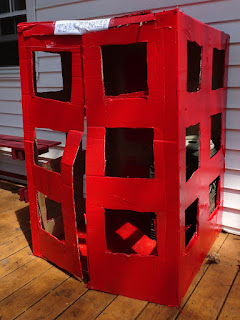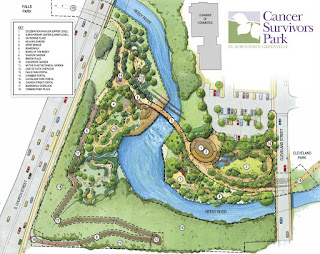What
happens when the still 3-year-old invites some superheroes over to celebrate
his fourth birthday?
Mom
convinces dad that the superheroes need a phone booth on the porch.
8 year old: “Why?”
8 year old: “Why?”
Mom: “To change into their superhero costumes of
course”
8yo: “But
superheroes just go back to their apartments to suit up.”
Mom: “What
about Clark Kent? He always used a phone booth.”
6yo: “Mom,
what’s a phone booth?”
Mom: …
Dad:
Mom
picks up a bunch of foam pieces and makes a skyline to put in the windows. Because
superheroes still have to be able to leap tall buildings in a single bound… I
think.
She
goes in search of the awesome capes the boys got from their Seattle uncles, and
in the process discovers the flippers she spent days searching for before the
Lake Jocassee trip - when they fall off the top shelf she is precariously perched under. But she found the capes…
and the batman costume that the 6yo will insist on wearing even though it’s
about 3 inches too short and gives him a superwedgie… and the batman mask that
is still popping up once or twice a day in unexpected places like on the
captain underpants that just ran through the house a third time to protest bedtime.
When
the superheroes arrive, they get to make their own capes. Because mom totally
thought it all thru; it’s not like fabric paint takes 24 hours to dry or
anything, of course their creations would be completely dry by the time the kids had to go
back to the batcave. And yes, these superheroes make their own capes, it's not like they have The Incredible's Edna Mode at their disposal...
 |
| ...or do they? |
Dad
prints out a ton of awesome superhero stuff that we paper the house with. POW! here’s
your morning coffee. BAM! oh here’s the peeler, I’ve been looking all over for
that. POP! obviously they got another balloon down. SPLAT! someone dropped the
glass of milk supermom just poured him.
 |
| ...and there's the batman mask! |
After
burgers all the superheroes were given a can of silly string so they could
practice their web-shooting in the backyard. BONUS: rolling the spent silly
string into balls and decorating each other’s hair with the stuff might have
been more fun than the actual silly string shooting… To think I was dreading
clean up, but the kids did it themselves!!!
Then dessert
and presents. This mom took a shortcut and opted for cupcakes. Deb Perelman has
a great, super-versatile batter recipe in her Smitten Kitchen Every Day
cookbook, and I added some cute little toppers.
Batman
was super-satisfied, and even supermom doesn’t have any regrets – it was a
super party. Happy birthday Vili! Now for a supernap…

















































